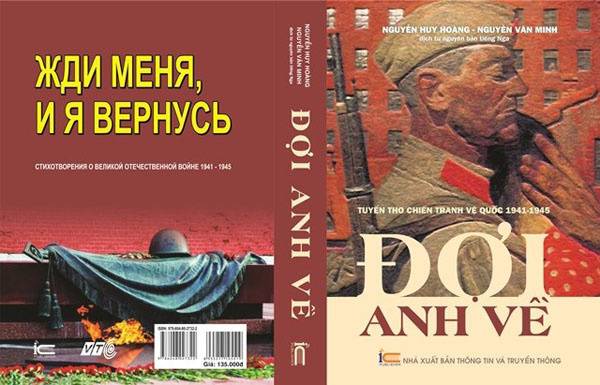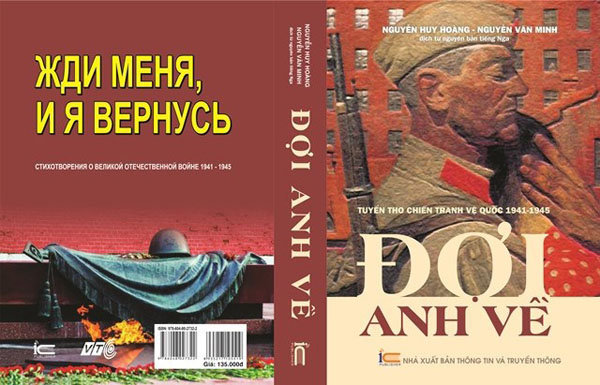
A collection of Russian poems on the Soviet Union’s patriotic war from 1941-1945 entitled "Wait for Me" has been translated into Vietnamese to celebrate the 100th anniversary of the October Revolution (1917-2017).

The Wait for Me poetry collection will be launched in
Vietnam (Photo: toquoc.vn)
The collection includes 180 poems from 24 poets written during the years from
1941 to 1945 when the country was fighting Nazi Germany.
Two Vietnamese translators Nguyen Huy Hoang and Nguyen Van Minh have worked
hard to collect the poems from prominent authors such as Konstantin Simonov,
Olga Bergholz, Yevgeny Yevtushenko and others.
In 1947, Simonov’s "Wait for Me" was translated into Vietnamese by
poet To Huu. It immediately became popular, and held significance among
Vietnamese people in the resistance war against the French.
The collection reflects the brutal reality of war through Russian characters
and their inner feelings. It shows the tragedy of battle, but is also
magnanimous and optimistic.
Lovers of Russian poetry will recognise many poems in this collection that have
been set to music, not only in Russia but also in Vietnam.
It is hoped that the collection will bring the Vietnamese an empathetic
understanding and pride for the patriotic war of the Soviet people and Soviet
literature.
The "Wait for Me" poem collection is hoped to act as a bridge between
literature of the two countries to contribute to consolidating their close
friendship.
It will be launched in Hanoi on November 3 at the 10th floor in 115 Tran Duy
Hung, Cau Giay district.
Those interested in Russia and especially Russian literature are invited to
join the event.
Source: VNA
Gongs hold a special place in the cultural and spiritual life of the Muong ethnic people in Hoa Binh province. More than musical instruments, they are an indispensable part of community rituals and collective memory, echoing through generations as a spiritual thread linking the past, present, and future.
Preserving and promoting the cultural values of the Muong ethnic group has become an urgent task in the current context, as many traditional values face the risk of fading away. This effort requires not only protecting the cultural identity but also eliminating outdated customs and developing a modern cultural lifestyle, contributing to sustainable values for the Muong community in Hoa Binh province.
The Muong ethnic culture, deeply rooted in Vietnam’s mountainous north, continues to be preserved and revitalised by dedicated individuals and communities determined to safeguard their ancestral identity.
The Muong group is one of the largest ethnic minorities in Vietnam, primarily found in Hoa Binh province. The Muong people in Hoa Binh boast a rich and diverse cultural treasure that reflects the unique identity of this ethnic group. Accounting for over 63% of the province's population, they have created and preserved numerous distinctive cultural values, contributing to their unique identity. Their cultural heritage is an invaluable asset, at the heart of their national identity, and represents a vibrant spiritual life that must be preserved and promoted in today’s modern world.
For generations, the ethnic communities of Hoa Binh province, particularly the Muong people, have preserved vibrant festivals deeply intertwined with the region’s geography, nature, and social traditions. These celebrations enrich Hoa Binh’s spiritual life and cultural identity, reflecting both folk beliefs and the intermingling of ethnic customs. Many of these festivals have endured the test of time, passed down through generations and continuing to thrive today. Among them, the Khai Ha (Going Down to the Field) festival stands out as one of the most significant events of the Muong ethnic group.
Muong calendar, known as sach doi, is an ancient folk knowledge system developed through observations of the movement of the pleiades star. This unique calendar consists of 12 bamboo sticks, each representing a lunar month. Specific days within each month are marked with distinct symbols, guiding locals in determining auspicious and inauspicious days for important activities.



